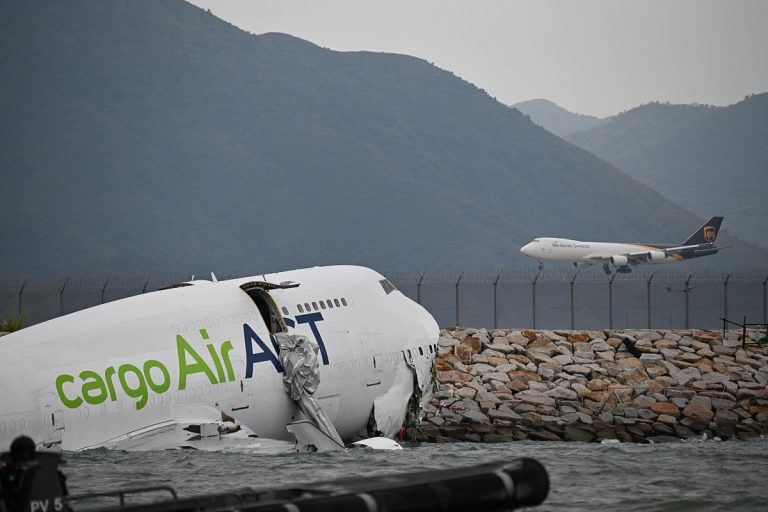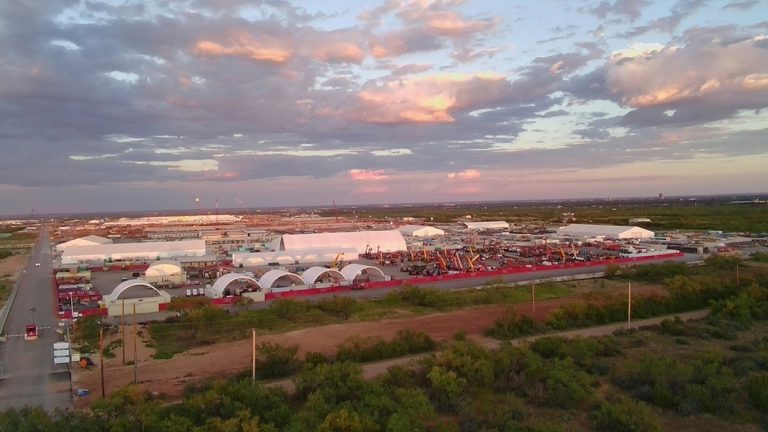Recovery Efforts for Boeing 747 Incident at Hong Kong Airpor
On October 20, 2025, a significant aviation incident occurred at Hong Kong International Airport involving a Boeing 747-400 freighter. The aircraft, operated by AirACT under a wet-lease agreement with Emirates SkyCargo, overran the runway during landing, leading to a tragic outcome and extensive recovery efforts.
Incident Overview
The AirACT Boeing 747-400, registered as TC-ACF, was landing on Runway 07L around 3:53 AM local time when it veered sharply to the left. This maneuver resulted in a collision with an airport patrol vehicle, tragically causing the deaths of two ground personnel. The aircraft’s fuselage came to rest partially submerged in the sea, with its tail section detached.
Recovery Operations
Following the incident, authorities quickly mobilized to recover the aircraft. By October 24, the tail section and both flight recorders had been retrieved from the water. A marine salvage barge successfully lifted the main fuselage on October 26, and the recovery operation was completed by October 27. This incident marks the deadliest aviation accident in Hong Kong since 1998, as reported by Flight Radar 24.
Investigation Details
The Hong Kong Airport Authority confirmed that while the main runway was temporarily closed for salvage operations, other runways remained operational, allowing flights to continue normally. Investigations are currently underway, with local and international agencies, including the Hong Kong Civil Aviation Department and the U.S. National Transportation Safety Board, collaborating to analyze flight data, pilot actions, and potential mechanical issues.
The recovered flight recorders and fuselage will provide critical information for the Air Accident Investigation Authority’s forthcoming report. This incident draws parallels to the 1993 China Airlines Flight 605 crash at Kai Tak Airport, which highlighted challenges associated with Boeing 747-400 landings in the region.
AirACT’s Background
AirACT, previously known as MyCargo Airlines, is a Turkish charter cargo operator. The international nature of this investigation involves multiple aviation regulators, underscoring the complexities of aviation safety in a global context. The recovery of the detached tail section may yield important structural insights, particularly given the Boeing 747’s history of tail-strike incidents during landings.
FAQs
What caused the Boeing 747 to overrun the runway?
The exact cause of the runway overrun is still under investigation, with authorities examining flight data, pilot actions, and mechanical factors.
How many people were affected by the incident?
The incident resulted in the tragic deaths of two airport security personnel who were inside the patrol vehicle struck by the aircraft.
What steps are being taken to ensure safety after this incident?
Investigations are ongoing, and findings will inform safety recommendations. The collaboration of multiple aviation agencies aims to address any identified issues to enhance future safety protocols.
Conclusion
The recovery of the AirACT Boeing 747-400 freighter marks a significant step in addressing the aftermath of this tragic incident. As investigations continue, the focus will be on understanding the factors that led to the accident and implementing measures to prevent future occurrences. The aviation community remains vigilant as they await further findings from the ongoing inquiry.
The Boeing 747-400 is one of the largest cargo aircraft in operation, known for its capacity and range. However, its size can pose unique challenges during landing, particularly in adverse weather conditions or when dealing with complex airport layouts. Hong Kong International Airport, situated on reclaimed land, has specific operational considerations that pilots must navigate, including potential wind shear and the proximity of water. These factors can complicate landing procedures and may have played a role in the incident involving the AirACT freighter.
In the wake of the accident, the aviation industry is likely to scrutinize existing protocols for runway safety and emergency response. The collaboration between international aviation authorities not only aims to uncover the causes of this specific incident but also seeks to enhance global safety standards. Lessons learned from this incident may prompt reviews of training programs for pilots and ground personnel, as well as improvements in runway design and maintenance practices to prevent similar occurrences in the future. The ongoing investigation will be pivotal in shaping these discussions and ensuring that aviation safety remains a top priority.
Also Read:
Philippine Airlines’ Recovery Journey After Bankruptcy
Red Sea Global Secures SAR 6.5B for AMAALA Project
Alex Eala Reaches Career-Best WTA Ranking Before Hong Kong O







